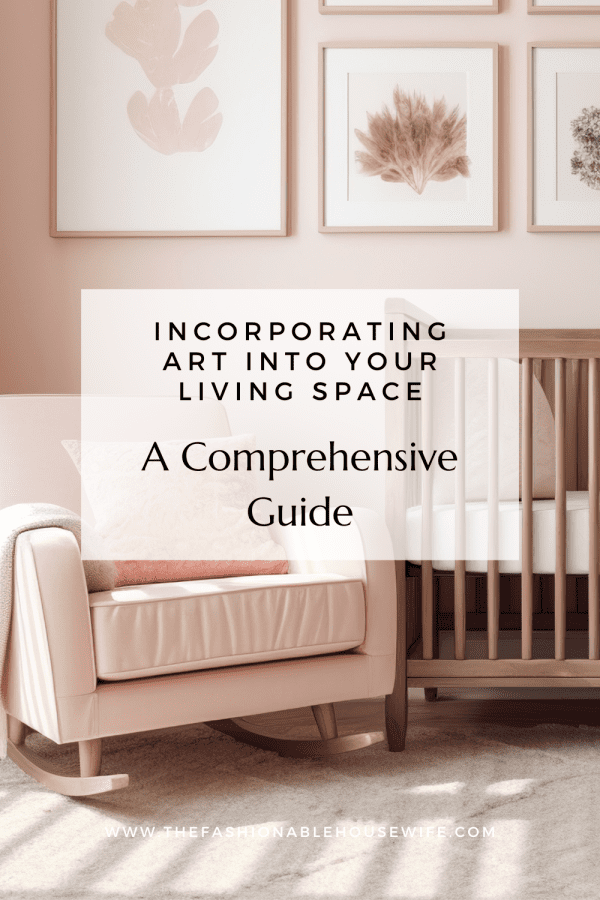
Art has the magical ability to transform any space. Whether it’s a painting hanging over the mantle or a sculpture nestled amidst a lush indoor garden, art brings warmth, personality, and a dash of culture to a home.
However, choosing and incorporating art can often be a daunting task. This comprehensive guide aims to simplify this process and provide you with tips to effectively add art into your living space.
Understanding Your Personal Style
Once you know what you’re looking for, you can delve into various art forms that align with your personal style. There are different types of art you could consider, from traditional paintings to modern digital art.
Know Your Preferences
Before diving headfirst into art galleries or online stores, it’s crucial to understand your personal tastes and preferences. What kind of art speaks to you? Is it abstract, realistic or mid-century modern? A visit to a local museum or art gallery can be an enlightening experience.
Seek Inspiration
Social media platforms, especially Pinterest and Instagram, are great sources for home décor ideas. Take inspiration but don’t forget to customize it to suit your own style.
Types of Art to Consider
Once you’ve got an idea of your preferred art style, the next step is to think about where these pieces will go. Different rooms in your house can accommodate different kinds of art, both in terms of style and size.
Paintings
The most traditional form, paintings can be of various styles—abstract, landscape, portraiture, and more. Consider experimenting with sizes as well. A large painting can serve as a statement piece, while smaller artworks can accentuate corners and nooks.
Sculptures
Three-dimensional art pieces add depth and grandiosity. However, they do demand more space and attention, so choose wisely.
Digital and Multimedia Art
Don’t limit yourself to traditional forms. Digital prints or even neon signs can add a contemporary touch.
Textile Art
Think outside the frame. Quilts, tapestries, and even rugs can be pieces of art when chosen with care.
Picking the Right Spot
Once you know the art that you want to display, choosing the right location for it is crucial. Choosing the right spot can make or break the overall aesthetic of the art and the location where it is displayed.
Living Room
Living rooms are where we spend a lot of time, sitting, reading or socializing. This is where a large painting on a wall or sculpture can serve as a focal point in this room.
Bedroom
Opt for more subdued and relaxing art pieces that create a sense of serenity.
Kitchen and Bathroom
Who says these utilitarian spaces can’t be artistic? Smaller pieces or quirky art forms can add life here.
Art Placement Tips
Getting the right placement can be challenging, but you don’t have to do it alone. If you find yourself stuck, consider seeking professional help for further customization and installation.
Height Matters
The artwork should be hung at eye level, which is approximately 57 to 60 inches from the floor.
Scale it Right
The scale of the art should be in proportion to the wall and surrounding furniture.
Create a Gallery Wall
A collection of smaller art pieces can have a big impact when arranged cohesively.
Professional Help and Customization
Your journey in incorporating art into your home doesn’t end after the installation. It’s essential to care for your pieces to ensure they last a long time and remain in optimal condition.
Consulting an Interior Designer
For those who find the process overwhelming, consulting an interior designer can help. These experts can align your artistic preferences with the overall aesthetics of your home.
Custom Artwork
If you can’t find the perfect piece, consider hiring an artist to create custom artwork for you. You can even consider custom furniture.
Expert Painting Services
Professional painters can help you prepare your walls for art. Whether it’s adding a new coat of paint or prepping a textured wall, these experts can ensure that your art is displayed at its best.
Care and Maintenance
While the thrill of acquiring and placing new art pieces is exhilarating, the long-term enjoyment of these treasures requires proper care.
Whether it’s cleaning, dusting, or rotating pieces to keep your living space fresh, taking care of your art ensures that you’ll be able to appreciate it for years to come.
Cleaning
Use a soft cloth to gently clean frames and glass-covered artwork. Sculptures may require specialized cleaning depending on the material.
Regular Rotation
Consider rotating artworks in different rooms every few months. This keeps your décor fresh and allows you to experience your art in different contexts.
Final Thoughts
Incorporating wall art into your living space doesn’t have to be a complicated or costly affair. The key is to choose what speaks to you and your home’s character.
By following these guidelines, you’ll have a space that not only looks visually stunning but also resonates with your personal style. Happy decorating!






